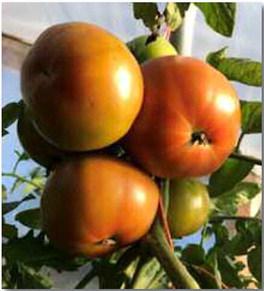Tomatoes are a staple in many gardens, offering rich flavors, vibrant colors, and versatility in the kitchen. However, growing tomatoes in the high desert climate presents unique challenges. At Tumbleweed Farms, located just north of Gallup, we have been successfully growing tomatoes since 2015. Tumbleweed Farms is a locally owned/operated farm, providing Gallup, Grants and the surrounding area with quality organically raised produce and plant starts. With proper planning and care you can grow delicious tomatoes that thrive in our high desert climate. Here are some of our essential tips for successfully growing tomatoes in this area.
At almost 6500 ft elevation, Grants, NM, experiences a unique high desert climate, characterized by extreme fluctuations between daytime and nighttime temperatures, high winds in the spring, intense heat in the summer, low moisture in the beginning of the growing season, and excessive moisture during the monsoon season in July and August. The last frost in the spring is usually sometime between May 10 and June 1 (sometimes even later) and the first frost of the fall occurs around October 1 to October 12, making it for a very short growing season (less than 150 frost free days). Understanding these growing conditions is crucial for selecting tomato varieties appropriate for this area and implementing cultivation practices that allow for these plants to thrive in this harsh climate.
When selecting tomato varieties for high elevation gardening, opt for varieties that are suited for short growing seasons, have good heat tolerance and crack resistance to cope with our periods of excessive rainfall. Consider growing hybrid varieties known for their disease resistance and adaptability to their environment. Some of the varieties that we like to grow at Tumbleweed Farms are: Early Girl, Roma, Sweet 100, Sun Gold, and Yellow Pear. If you are able to extend your growing season with the use of a greenhouse or frost protection blankets, you may consider varieties such as Cherokee Purple, Brandywine, and the various Beefsteak tomatoes.
If you decide to start your tomatoes from seed, start them indoors about 68 weeks before you are ready to transplant them outside (I usually start my tomato seeds about the middle of March). Use seed starting mix and provide adequate warmth, moisture, and light for germination. Supplemental light might be needed (such as using grow lights) if the seedlings get leggy and weak. Make sure to harden off your tomato starts before transplanting. Set them outside in the shade in wind-protected area a few hours per day for about a week, gradually increasing the time outside.
If you choose to get ready-to-plant tomato starts, look for plants that are acclimated to this area. Locally started and grown plants are going to be used to temperature swings, dry air, and high elevation, and, therefore, will have a higher survival rate than plant starts grown at lower elevation in climate-controlled greenhouses. Grants Farmers Market usually has a great selection of locally grown plant starts.
Plant your tomatoes in a location that receives at least 6-8 hours of direct sunlight per day. Full sun is perfectly fine. Space tomatoes 18 – 36 inches apart (depending on variety). When transplanting your tomato seedling in the ground, bury it about 6 – 8 inches from the bottom of the root ball, making sure that at least 1/3 of the stalk is buried (you can also lay it down in a trench). The seedling will grow roots out of the part of the stalk that is buried, making the plant stronger. I usually add a handful of crushed eggshells (calcium), Epsom salt (Magnesium), and general vegetable plant fertilizer to each hole.
Consistent watering, keeping the soil moist at root level, is essential for tomato plants, especially in the dry climate of New Mexico. Bottom water the tomato plant, try not to sprinkle water on the leaves. Apply a layer of mulch to prevent water from evaporating too quickly to regulate soil temperature, and also to reduce weeds.
Most tomato varieties benefit from staking or caging to support them as they grow and to keep fruit off the ground, reducing the risk of pests and diseases. Prune tomatoes by removing suckers (side shoots) to encourage fruit development and improve air circulation.
Harvest tomatoes when they reach their mature color and firmness, typically 60-80 days after transplanting. Handle tomatoes carefully to avoid bruising and store at room temperature away from direct sunlight. Tomatoes can also be refrigerated for extended storage or preserved through canning, freezing, or dehydrating for yearround enjoyment.
Growing tomatoes in this area requires careful consideration of the region’s unique climate and growing conditions. By selecting suitable varieties and providing proper care, you can enjoy a bountiful harvest of flavorful homegrown tomatoes that thrive in the high desert climate.
Natalja Varezkina-Elliott is a Cibola-McKinley County Master Gardener who lives and works in Gallup, NM. As a Master Gardener she assists the County Cooperative Extension Service in providing accurate, research-based gardening information to county residents. If you have any gardening questions, please call the NMSU Cibola County Extension at 505-287-9266 or NMSU McKinley County Extension at 505-863-3432.
Natalja together with her husband, Jason Elliott, are also Tumbleweed Farms Owners/Growers/Operators. For any questions or comments see our Facebook page Tumbleweed Farms Gallup, or send us an email at tumbleweedfarms. gallup@gmail.com

